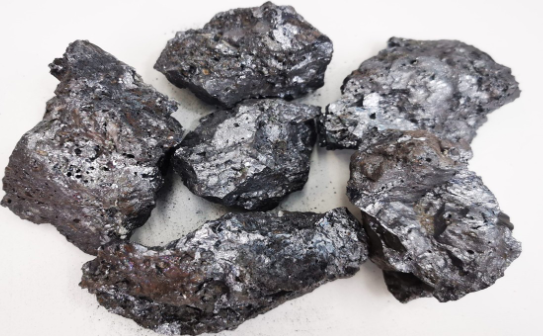Silicon slag, also known as silicon by-product or silicon residue, is a by-product derived from the process of silicon metal production. This material is generated during the refining of silicon metal and contains a mixture of silicon and other impurities. While often considered a waste product, silicon slag has found several valuable applications in various industries due to its unique properties.
Silicon metal is produced through the reduction of silica (SiO2) with carbon in electric arc furnaces. During this process, high temperatures are used to reduce silica to silicon. However, not all of the silicon is recovered as pure silicon metal; a significant portion remains mixed with impurities in the form of silicon slag. This slag contains varying amounts of silicon, typically ranging from 20% to 80%, along with other elements such as iron, aluminum, and calcium.

Composition of Silicon Slag
The composition of silicon slag can vary widely depending on the specific production process and the source of the raw materials. Generally, it contains:
- Silicon (Si): The primary component, its concentration can significantly impact the slag’s utility.
- Iron (Fe): Often present due to the use of iron-containing raw materials.
- Aluminum (Al): Can be introduced from the furnace lining or raw materials.
- Calcium (Ca): Typically found in the raw materials or introduced as a fluxing agent.
- Other Elements: Small amounts of phosphorus, sulfur, and carbon may also be present.
Despite being a by-product, silicon slag is far from useless. Its diverse composition makes it suitable for several applications, including:
- Steelmaking:
- Deoxidizer: Silicon slag is commonly used as a deoxidizer in steelmaking. It helps remove oxygen from molten steel, improving the quality and durability of the final product.
- Alloying Agent: The silicon content in slag can be utilized as an alloying agent in the production of certain steel grades.
- Casting Industry:
- Inoculant: In the foundry industry, silicon slag can act as an inoculant to improve the mechanical properties of cast iron.
- Flux: It can also serve as a flux to reduce impurities and enhance the fluidity of molten metal.
- Recycling and Recovery:
- Silicon Recovery: Advanced methods are being developed to recover silicon from slag, making the process more sustainable and economically viable.
- Secondary Products: The remaining material after silicon recovery can be used in the production of cement, ceramics, and other construction materials.
- Agriculture:
- Soil Amendment: Due to its mineral content, silicon slag can be used as a soil amendment to enhance soil fertility and improve crop yields.
Environmental and Economic Benefits
Utilizing silicon slag offers several environmental and economic advantages:
- Waste Reduction: By finding uses for silicon slag, industries can reduce the amount of waste sent to landfills, contributing to more sustainable practices.
- Cost Efficiency: Reusing slag in industrial processes can lower raw material costs and enhance the overall efficiency of production.
- Resource Conservation: Recovering silicon and other valuable elements from slag conserves natural resources and reduces the need for new mining activities.
Silicon slag, once considered a mere waste product, has proven to be a valuable material with multiple industrial applications. Its use in steelmaking, casting, recycling, and agriculture demonstrates its versatility and potential to contribute to more sustainable industrial practices. As technologies advance, the efficiency of silicon recovery and the development of new applications for silicon slag are likely to increase, further enhancing its role in various industries.
![]()